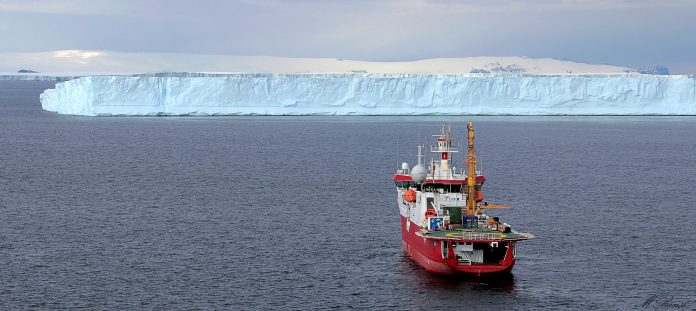by InTrieste
In a bold Antarctic expedition, the Italian research vessel Laura Bassi has set sail from the port of Lyttelton in New Zealand. Its destination: the frigid expanse of Antarctica, where it will play a crucial role in supporting research activities tied to three distinct projects focused on studying the physical and biogeochemical dynamics of specific Antarctic regions.
This marks the commencement of the 39th Antarctic expedition, funded by the Ministry of University and Research (MUR) as part of the National Antarctic Research Program (PNRA). The coordination of scientific efforts falls under the purview of the National Research Council (Cnr), logistical planning and organization at Antarctic bases are managed by the National Agency for New Technologies, Energy and Sustainable Economic Development (ENEA), while the technical and scientific management of the icebreaker Laura Bassi is overseen by the National Institute of Oceanography and Applied Geophysics – OGS. The vessel will circumnavigate the entire Ross Sea, concluding its Antarctic mission back in New Zealand after 60 days in March 2024.
Owned by the National Institute of Oceanography and Applied Geophysics – OGS, the icebreaker Laura Bassi will embark on a single rotation from New Zealand to Antarctica this year, carrying a team of 39 individuals involved in research, including 23 crew members. Notably, this mission marks the first-ever collaboration with a New Zealand Antarctic project, involving a team of 12 individuals.
The icebreaker’s journey commenced on November 25th, departing from the port of Naples for a roughly 40-day voyage. Navigating through the Red Sea and the Gulf of Aden, the icebreaker adhered to anti-piracy measures and sailed along a security corridor protected by military vessels from various countries.
By the end of December, the vessel arrived at Lyttelton to embark on the research mission. Following loading operations, on January 6th, the ship departed from the port of Lyttelton, bound for the Ross Sea.
The research activities will focus on three projects: “Tenore” (Terra Nova bay polynya high-Resolution Experiment), studying the polynya zone of Terra Nova Bay; “Signature” (PhySIcal and bioGeochemical traciNg of wATer masses at source areas and export gates in the Ross Sea and impact on the SoUtheRn OcEan), analyzing the biological, chemical, and physical aspects of the main water masses in the Ross Sea; and “MORsea” (Marine Observatory in the Ross Sea), managing a network of marine observatories established since 1994 in the Ross Sea.
In addition to scientific endeavors, between January 21st and 26th, the vessel will unload materials essential for the operation of the Mario Zucchelli Antarctic base. The return to the port of Lyttelton in New Zealand is scheduled for early March 2024.
The icebreaker will transport two refrigerators containing ice cores extracted as part of the international Beyond EPICA project, led by Carlo Barbante, director of the CNR Polar Sciences Institute. This project aims to reconstruct the Earth’s climatic history by analyzing Antarctic ice, reaching back 1.5 million years to unveil information about temperature and greenhouse gas concentrations in the atmosphere.
This year, the vessel will also support the marine research efforts of the New Zealand scientific program by hosting 12 researchers from the southern nation, marking an internationally prestigious collaboration for the PNRA.





























